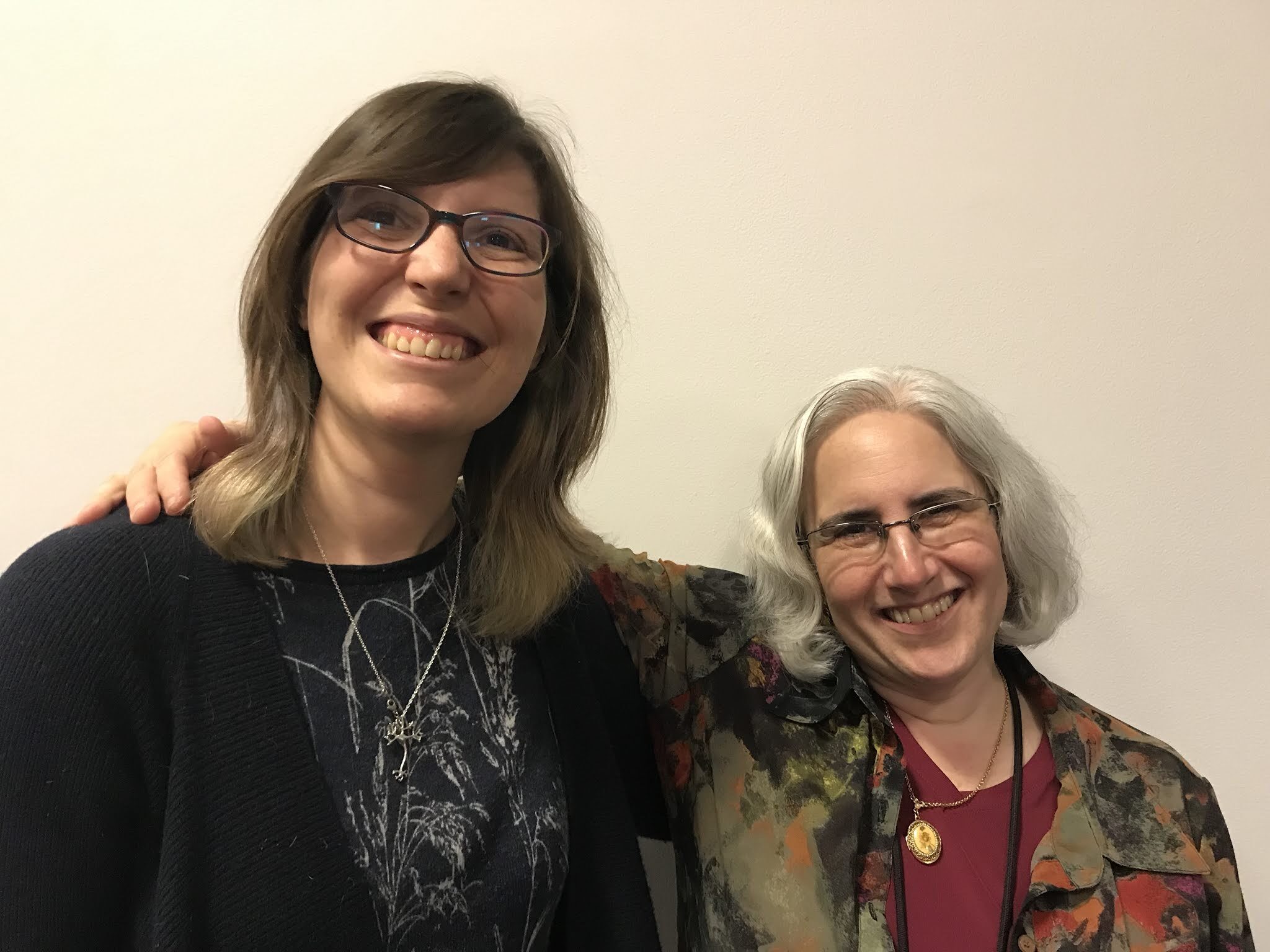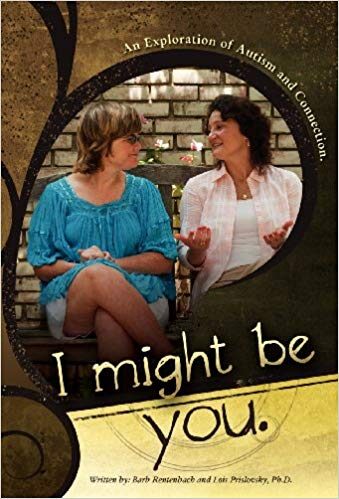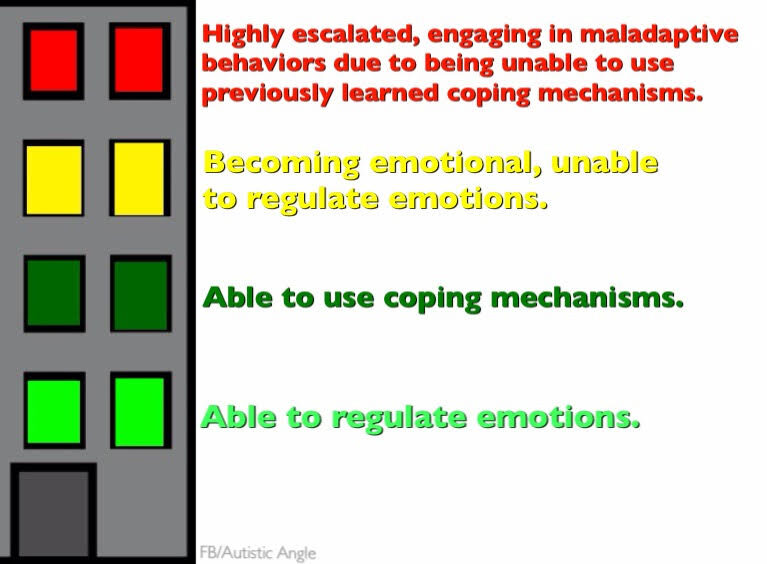If you don’t want people exposing your private moments online, then don’t do it to [autistic people]. Don’t have a double standard. Treat them in the way that you would want to be treated. Think of it that way.
Tag: self-injury
Photo © Tony Cheng | Flickr / Creative Commons [image: Blue medical mask painted with a toothy, red-lipped smile.] Content note: Discussion of self-injury, self-harm, and aggression. —- Of all the varied stress bombs COVID-19 has lobbed at autistic people and their families, one of the more universal is the stress caused by routine disruption, coupled with constant close quarters. Few of us are at our best under such circumstances, so we wanted to share some advice and insights from autistic people and/or parents who are experiencing what you are experiencing about handling some of the tougher aspects, like increased tendencies towards self-injury and aggression. We also want to direct people towards our existing resources: Autistic Insights on Meltdowns, Aggression, and Self-Injury Understanding Autism, Aggression, and Self-Injury: Medical Approaches and Best Support Practices Behaviour Analysis, The Autistic Way Eleven Ways You Can Make Your Autistic Child’s Life Easier First, we…
Dr. Rachel Moseley and Carol Greenburg [image: Photos of two smiling white women wearing glasses posing together. Left, Rachel Moseley has shoulder-length light brown hair. Right, Carol Greenburg’s hair is in a platinum bob.] Content note: This interview discusses self-injury and suicidal behavior. Oftentimes the most rewarding findings at INSAR, the annual meeting for the International Society for Autism Research, emerge during the pre-conference sessions. We went to the 2019 pre-conference on autism and mental health and were impressed by Dr. Rachel Moseley’s presentation on self-injury in autistic people without intellectual disability—and are grateful that Dr. Moseley was able to make time to talk with TPGA editors Carol Greenburg and Shannon Rosa about her research. Shannon Rosa: Dr. Moseley, can you first tell us a little bit about yourself, and your background and affiliations? Dr. Moseley: I’m a researcher at Bournemouth University. I did all my studying and my PhD…
Photo: Nancy Marie Davis | Flickr / Creative Commons [image: sepia-tone print of a clenched fist, with superimposed scratched lines.] Maxfield Sparrow unstrangemind.com A little over two years ago, Crystal Garrett wrote an article for Thinking Person’s Guide to Autism about the long-term traumatic effects on her Autistic son of the restraints and seclusion used against him at school. Garrett chose to end her career as a journalist to stay at home and school Zachary herself. Garrett wrote, “We know a restraint and seclusion free environment is realistic. Virginia-based Grafton Integrated Health Network, an organization that works with children and adults with autism and co-occurring psychiatric diagnoses, went restraint and seclusion free ten years ago. Since then, their client and staff injury rate has dramatically gone down, while employee satisfaction has increased. They are now teaching their system, Ukeru, to others across the country, in order to create a trauma-informed…
[image: Cover of the book “I Might Be You,” showing two seating white women facing and engaging with each other.] Maxfield Sparrow unstrangemind.com I Might Be You: An Exploration of Autism and Connection (2012) By Barb Rentenbach and Lois Prislovsky; Audio version (2013) read by Lois Prislovsky PhD and Ariane Zurcher Neurodiversity: A Humorous and Practical Guide to Living with ADHD, Anxiety, Autism, Dyslexia, The Gays, and Everyone Else (2016) By Barb Rentenbach and Lois Prislovsky; Audio version (2016) read by Chad Dougatz, Lois Prislovsky PhD, Carol Riggs Holloway, John Bond, and Jery Yarber I read “I Might Be You” in 2014 and loved it, but never thought to review it back then. When I discovered that Barb Rentenbach and Lois Prislovsky had a second book out, I got it in an Audible version and, on a whim, decided to get the Audible version of “I Might Be You” as well, and…
Kaelynn Partlow Facebook.com/AutisticAngle I’m an adult with supposed “high functioning” autism. I drive my own car, and for the most part, I have many self help skills. There is nothing obviously different about the way I speak. I also work as a therapist, with young autistic children. Due to the nature of my job, I am required to get a tuberculuosis (TB) test every year. The test involves a needle, and I’ve had a severe phobia of needles for as long as I can remember. To be perfectly honest, I’ve always had a general phobia when it comes to medical procedures, even the painless ones. So, when it came time for my yearly test, my supervisor accompanied me to provide extra support. She and I have been close for several years and she has been there to support me in many other ways, even before my employment. In the waiting…
Shannon Des Roches Rosa Photo © Skyseeker, on Flickr. Creative Commons license. [image: lightning striking a cityscape, at night.] Spectrum News recently published How ‘Shock Therapy’ is Saving Some Children with Autism. The article was also published in The Atlantic. Like many of you, my initial reaction was “WTF.” Which, to be fair, was in part primed by the the misinformation spread by existing autism and electroconvulsive therapy (ECT) proponents. But I am always worried about articles about “treatments” for autistic people who self-injure, because of the focus on treatments rather than sourcing out causes. So here’s what I think you should know about reading articles like this, and about ECT and autism in general. Spectrum is dedicated to covering developing autism science, and articles of interest to the autism science and research communities. Ideally, those readers already understand that there is very little research into autism and ECT, that…
Sometimes people try to get your attention by doing things that can appear to be aggressive, but they’re really saying, “I have a problem, and I need help.”
Ariane Zurcher emmashopebook.com I’m continuing to research SIBs, which stands for “self-injurious behaviors.” It’s far too complex a topic to tackle in a quick 800-1000 word post. There are a number of topics it seems important to discuss, which all fall under the heading of “self-injurious behavior.” (Feel free to add more in the comments section, this is definitely a work in progress.) I’ve broken these topics down to include: The language we use to describe such actions. The perception (usually of neurotypical parents, caregivers, doctors, school employees, educators and the general public) of what these actions may or may not mean, this is particularly critical when the person taking such actions is partially speaking or non-speaking. The personal experiences of those who have engaged in such actions that may or may not lead to real injury. The experience of those who want to help and/or are in a position…
Bridget Allen ItsBridgetsWord.wordpress.com Self Injurious Behaviors. The magic trump card to stop down any conversation about autism. Three words loaded with emotion for anyone who loves an autistic. You want to protect the ones you love. In this case, the one you love and want to protect is also the very same person who is hurting the one you love and want to protect. It’s heartbreaking and confusing. I get that. I promise. Self injurious behaviors (SIBs) are often cited by those who view autism as a tragedy. Their child’s autism causes him to engage in SIBs, and they would do anything to make the autism that causes their child to hurt himself for no apparent reason to go away. Personally, I have been told I am “so high functioning” I cannot possibly understand, but I do understand because I am an autistic who engages in self injurious behaviors. I’m…







